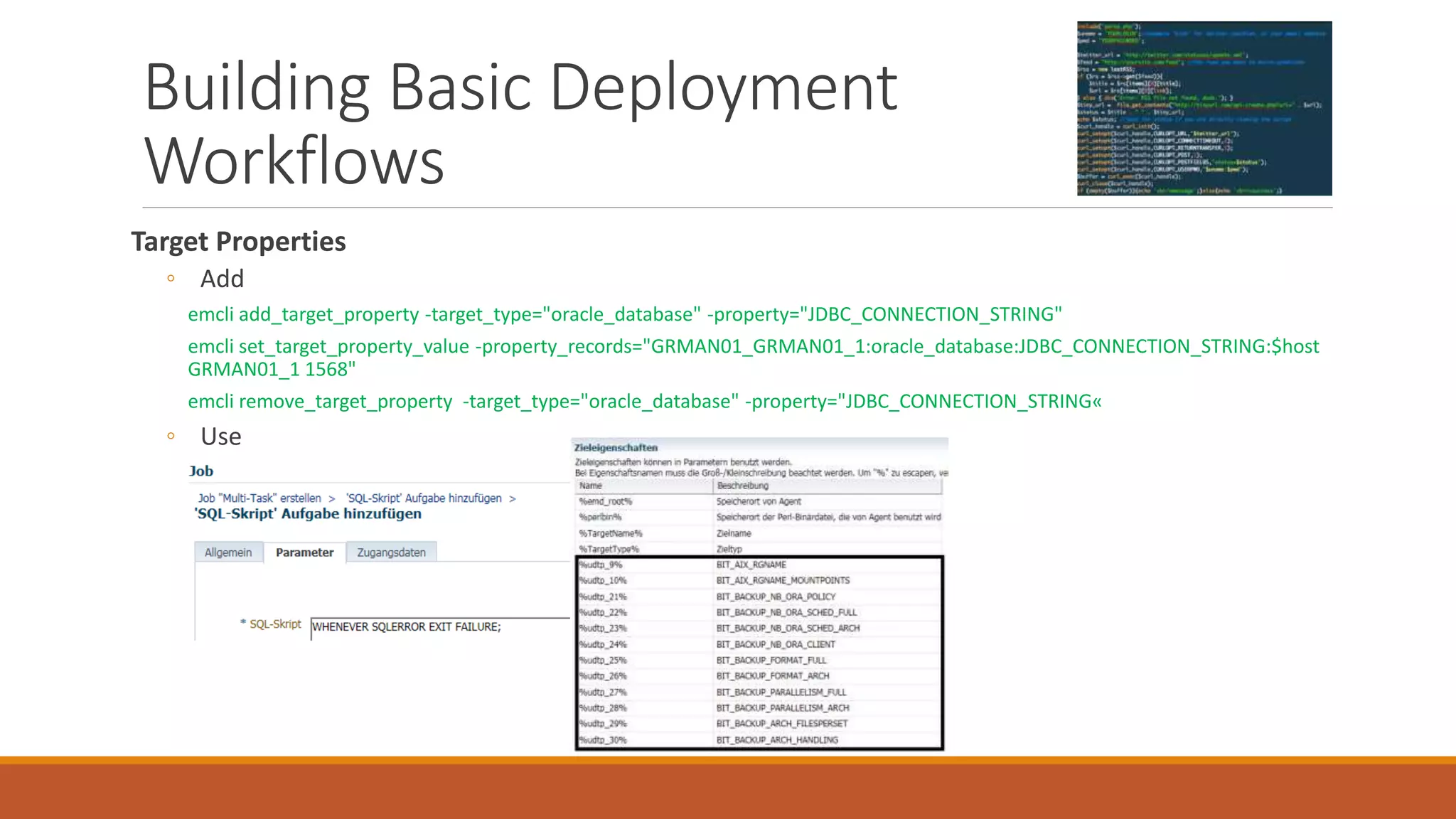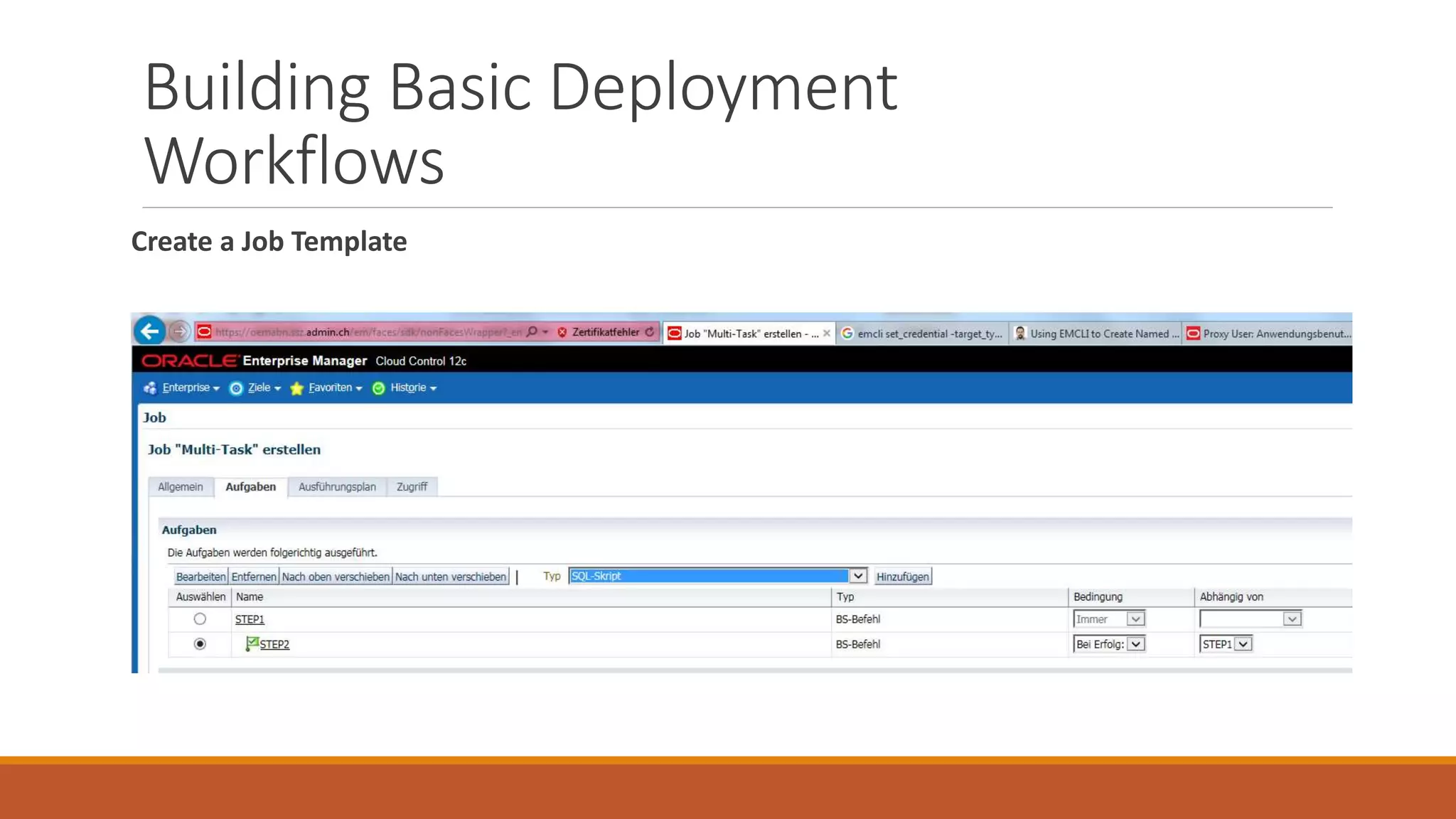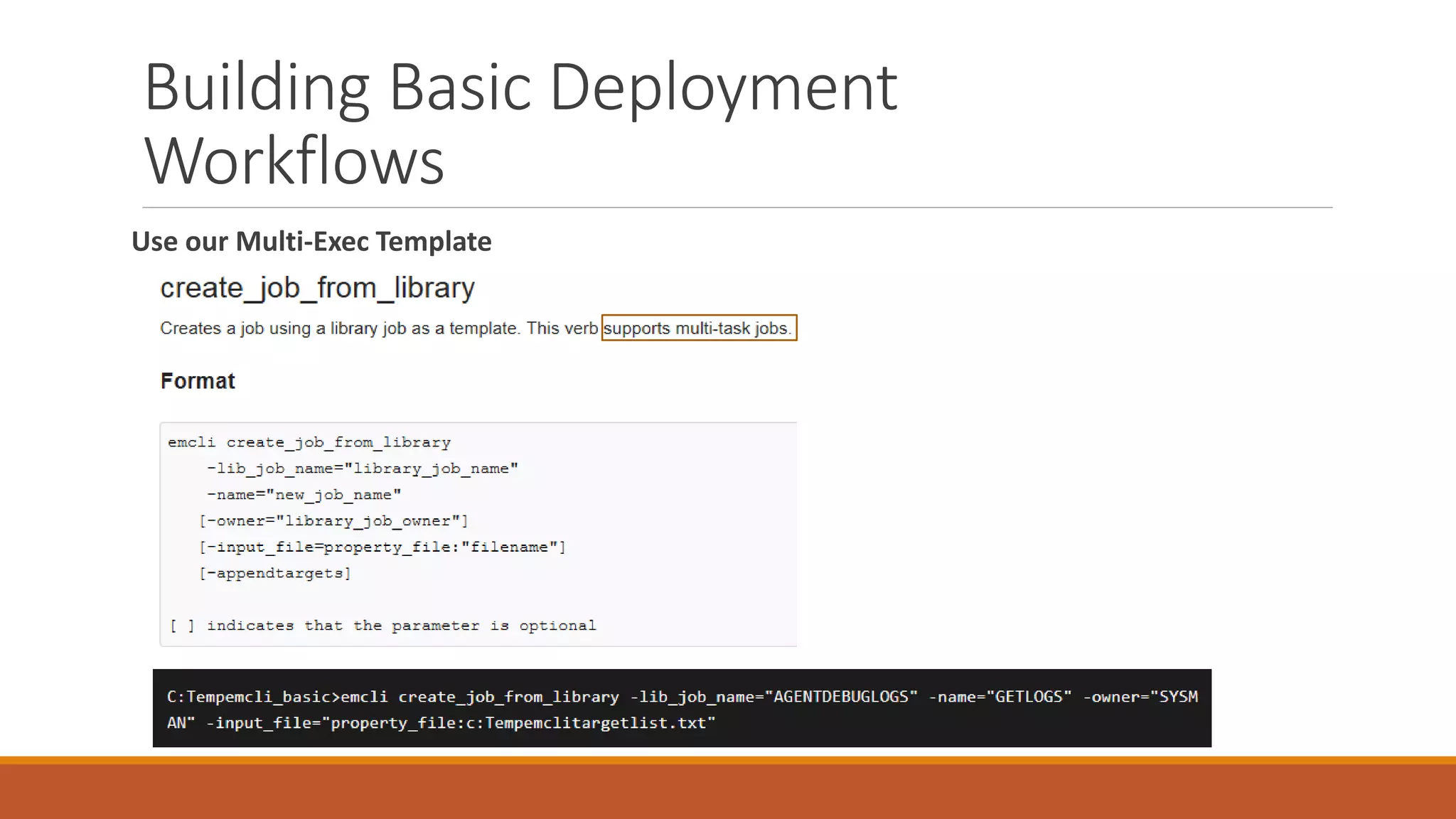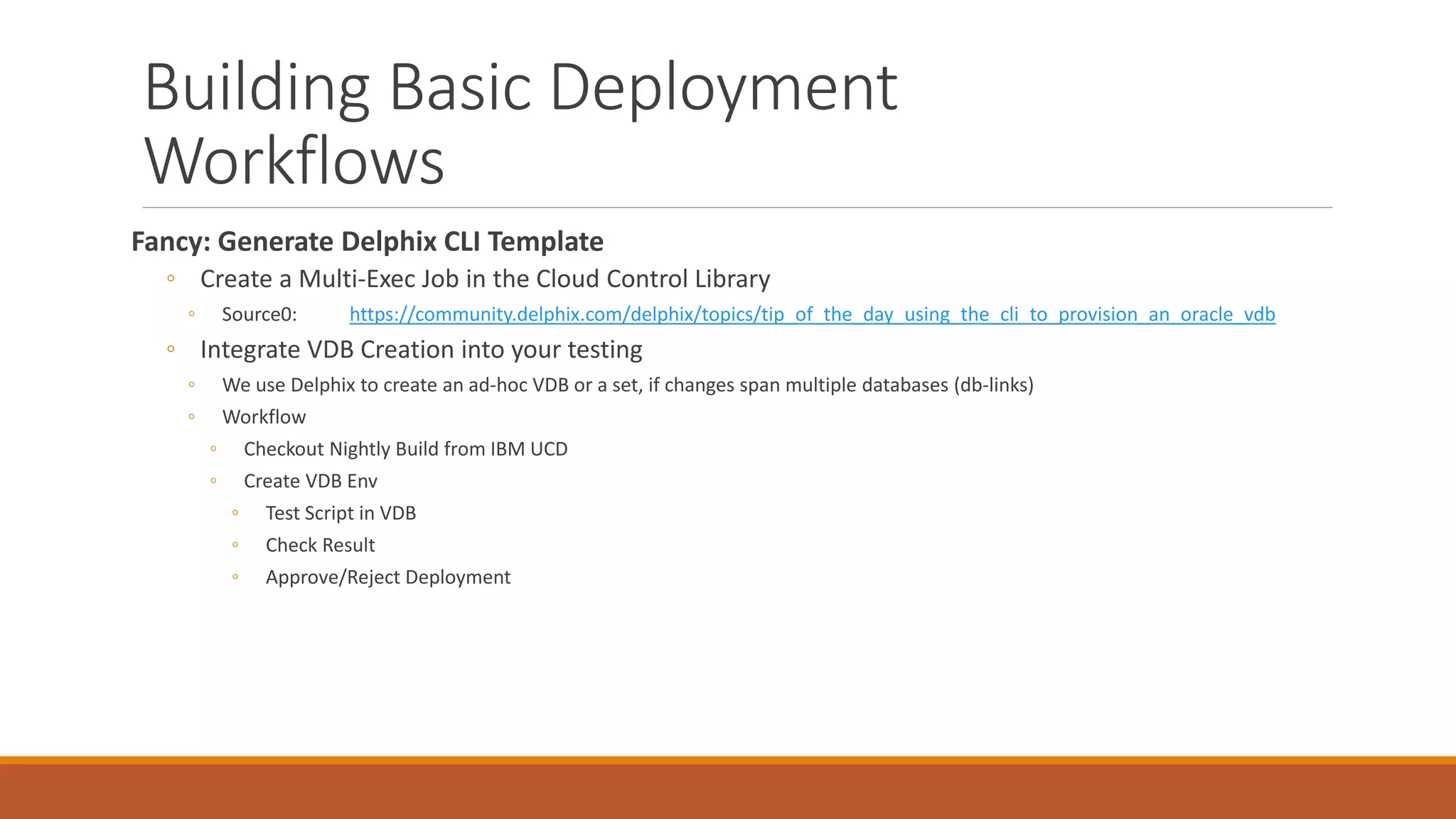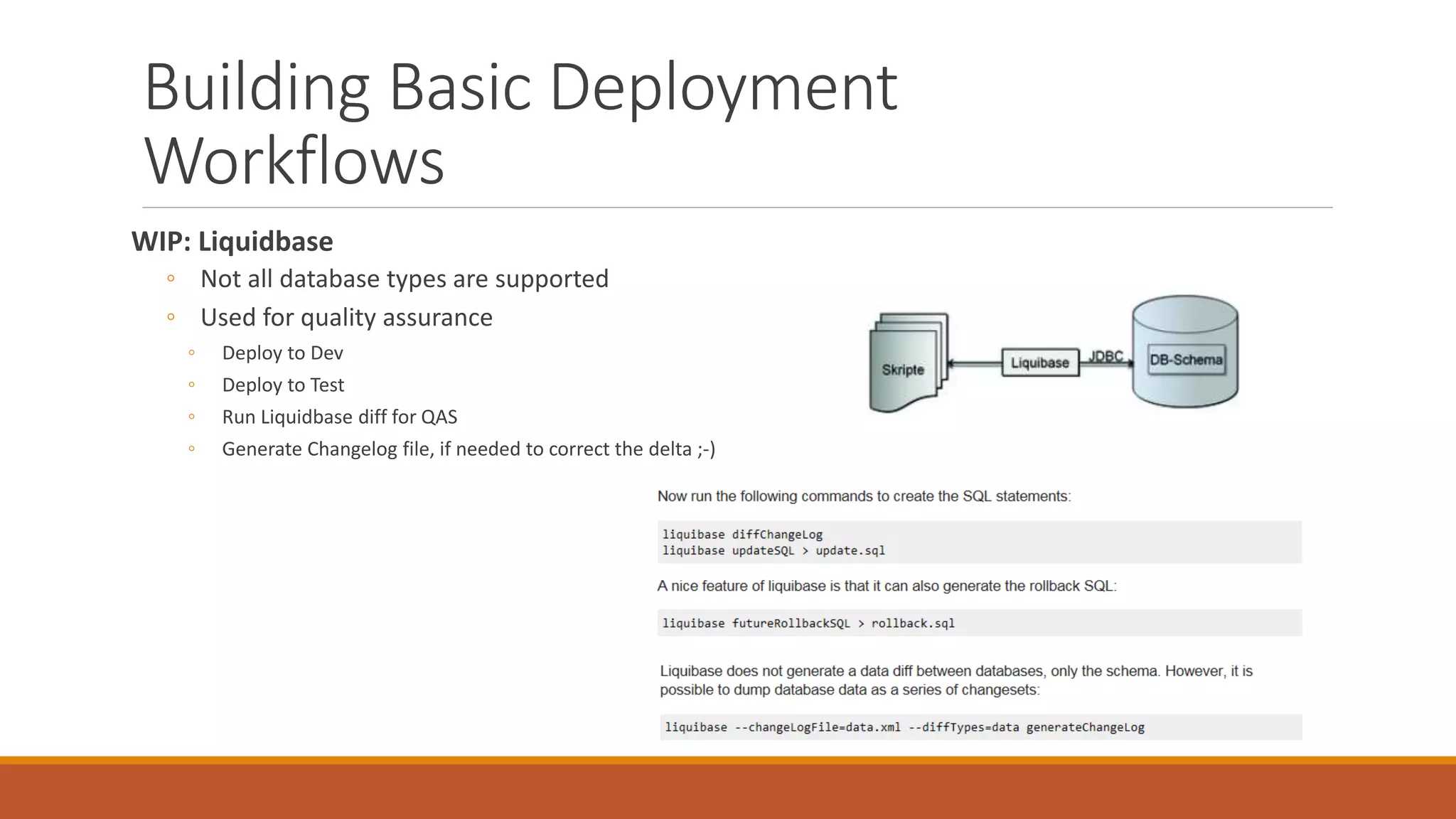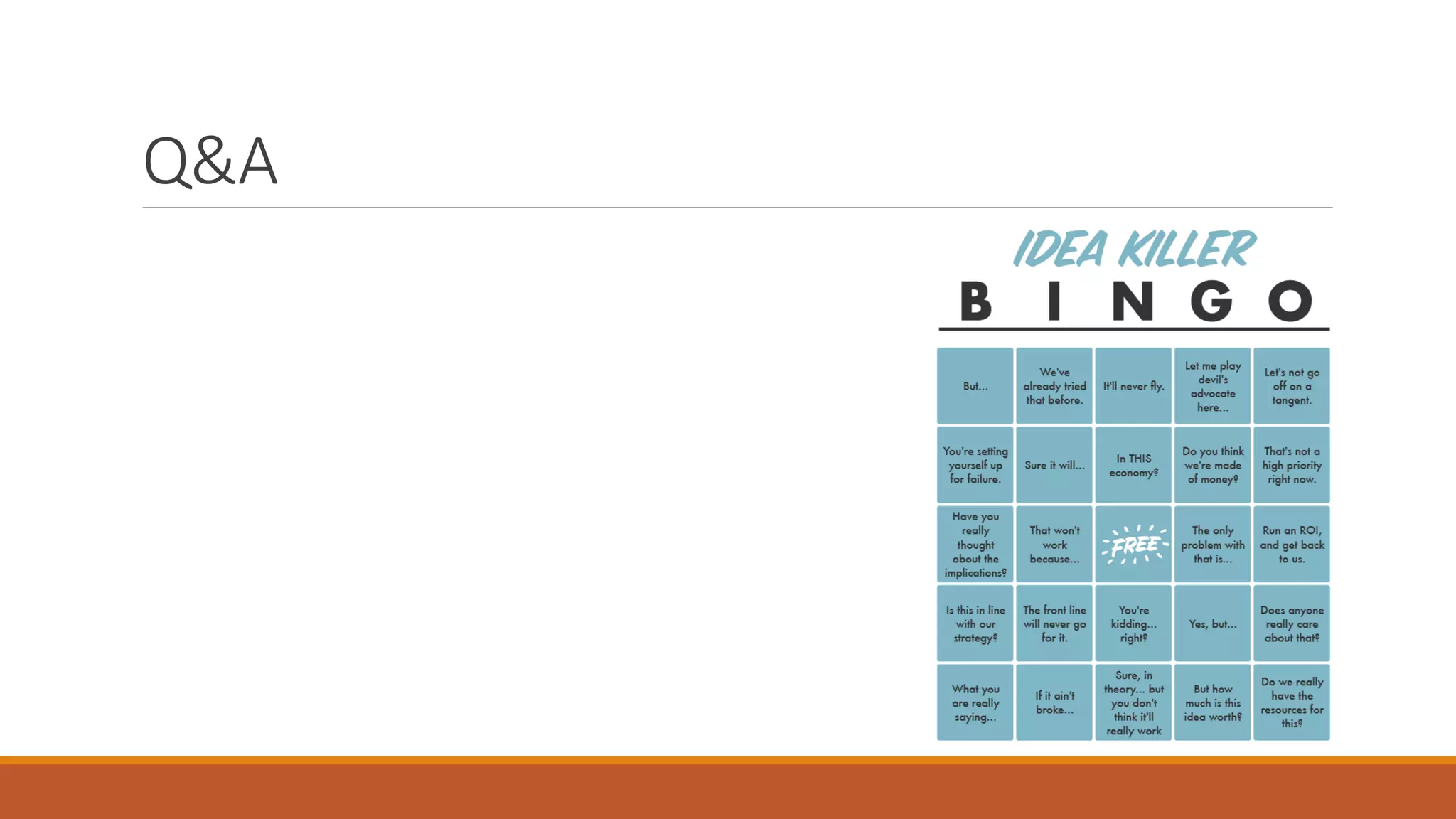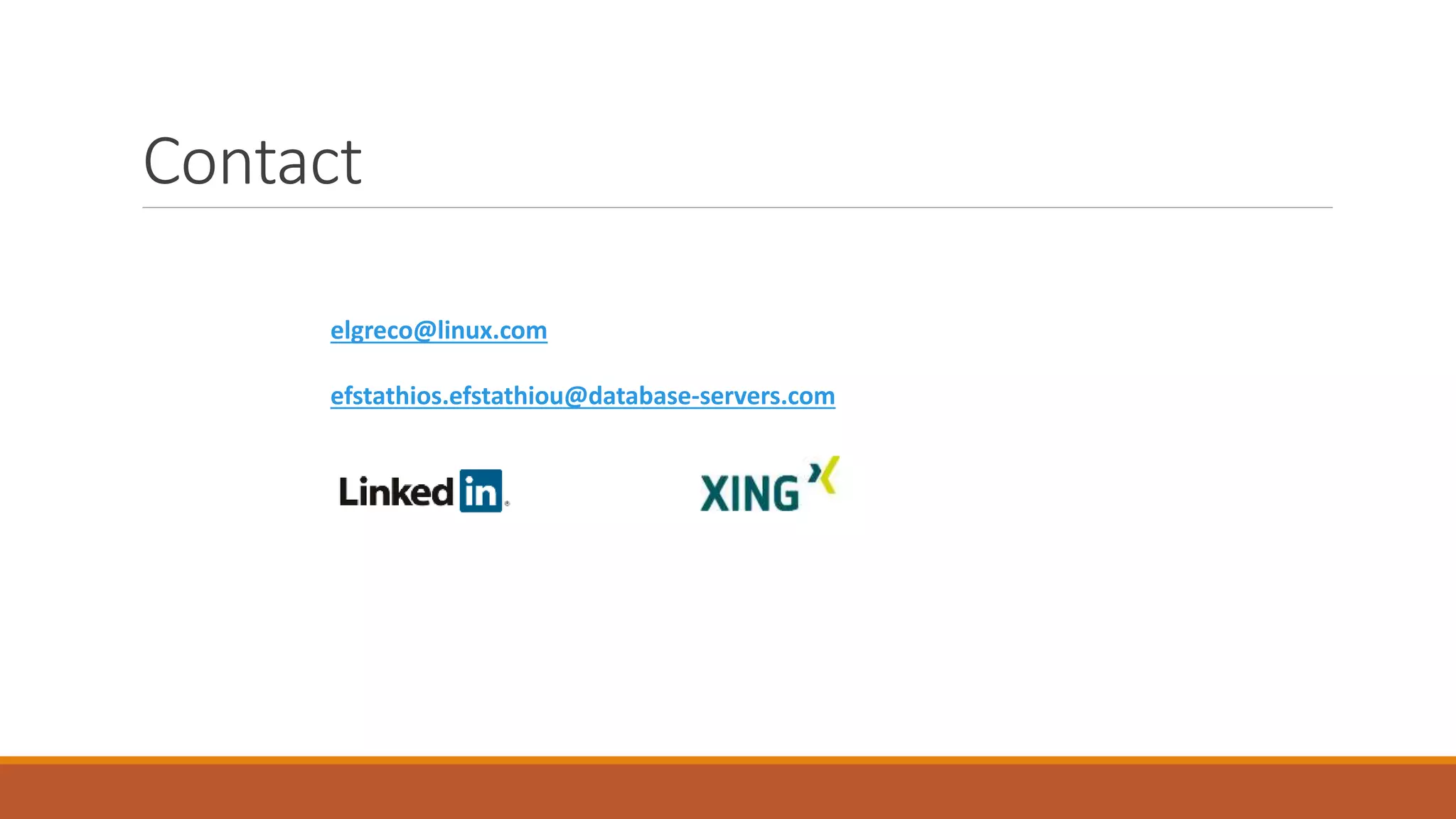This document discusses database deployment automation. It begins with introductions and an example of a problematic Friday deployment. It then reviews the concept of automation and different visions of it within an organization. Potential tools and frameworks for automation are discussed, along with common pitfalls. Basic deployment workflows using Oracle Cloud Control are demonstrated, including setting credentials, creating a proxy user, adding target properties, and using a job template. The document concludes by emphasizing that database deployment automation is possible but requires effort from multiple teams.
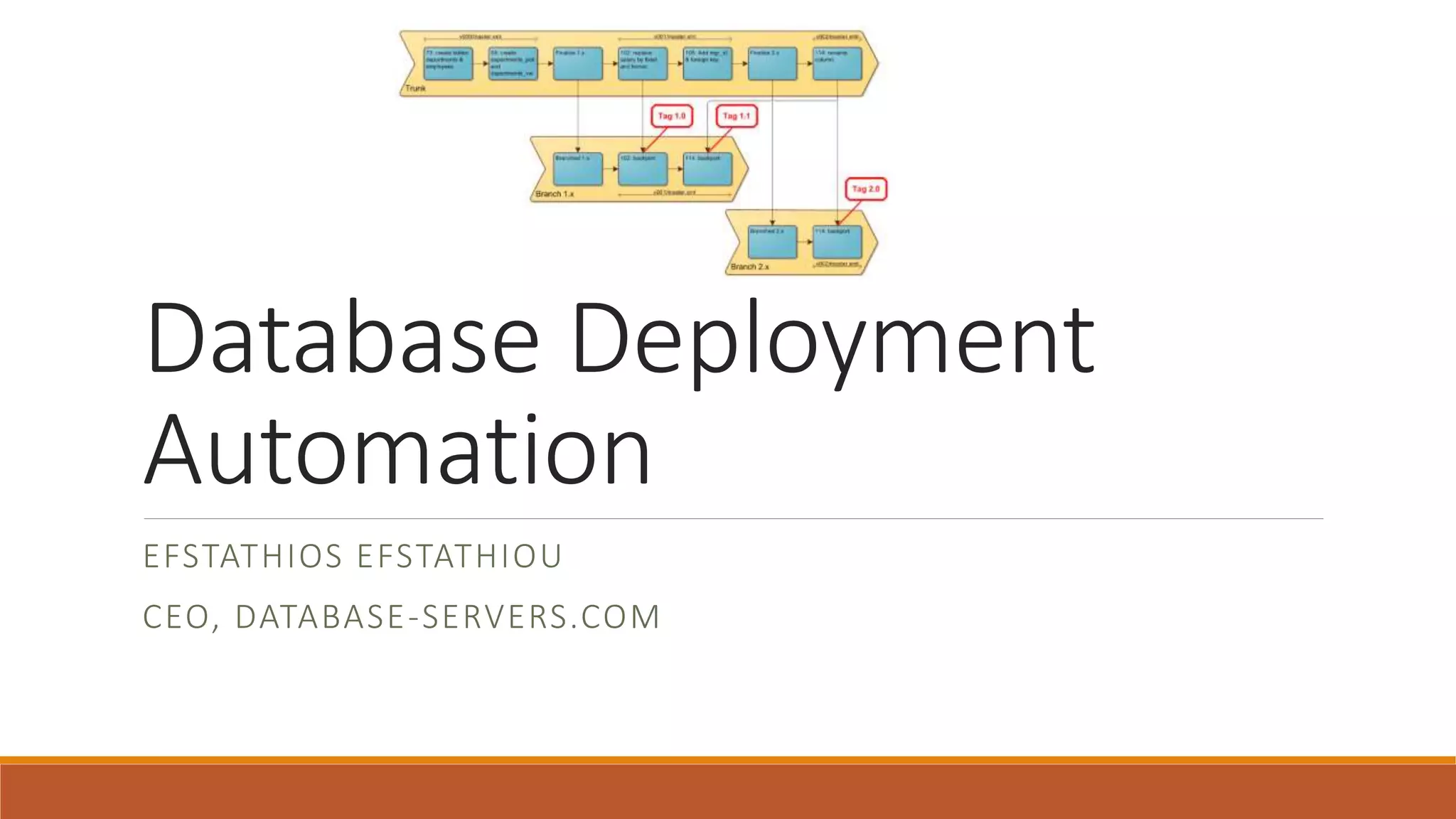
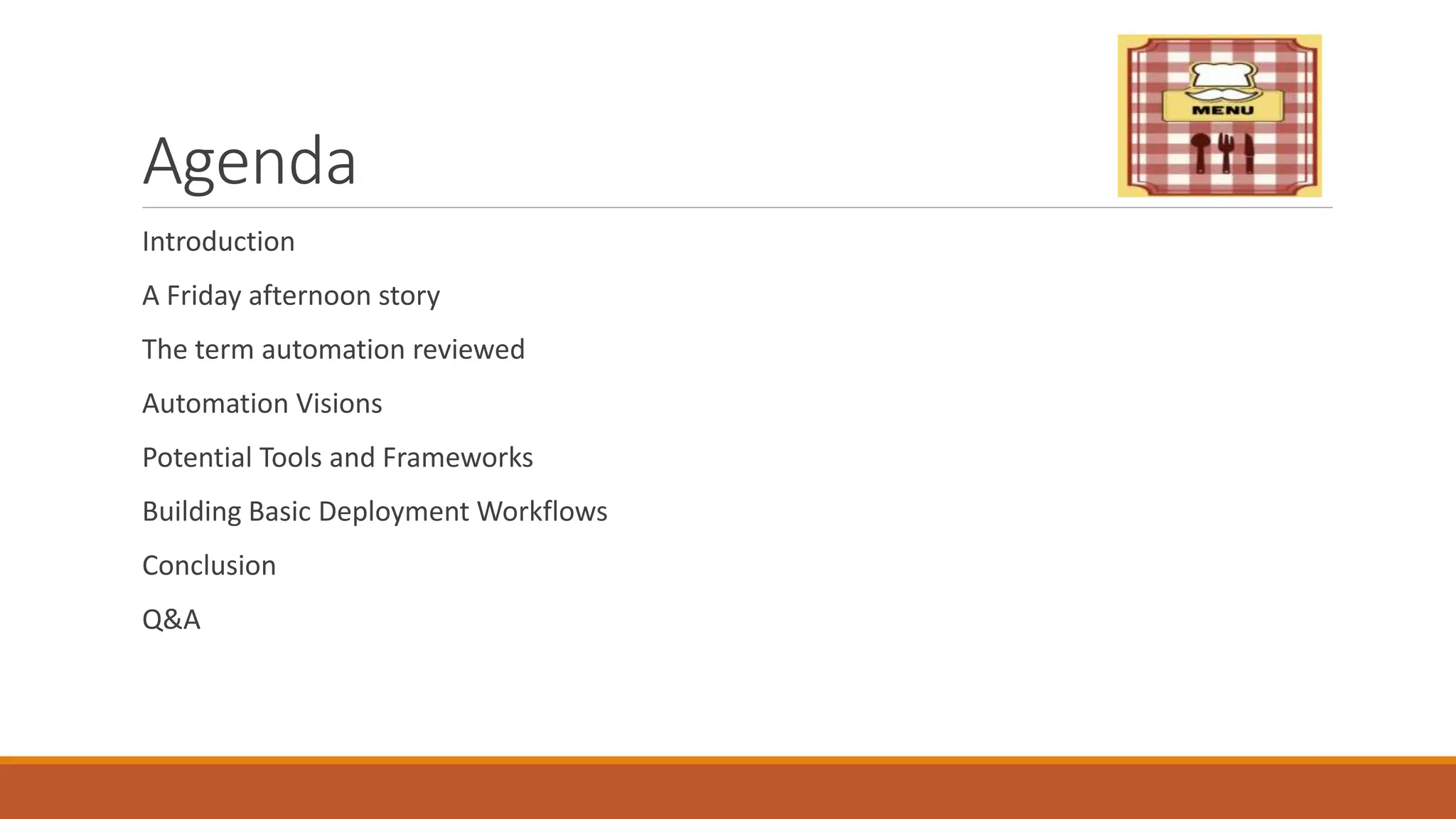
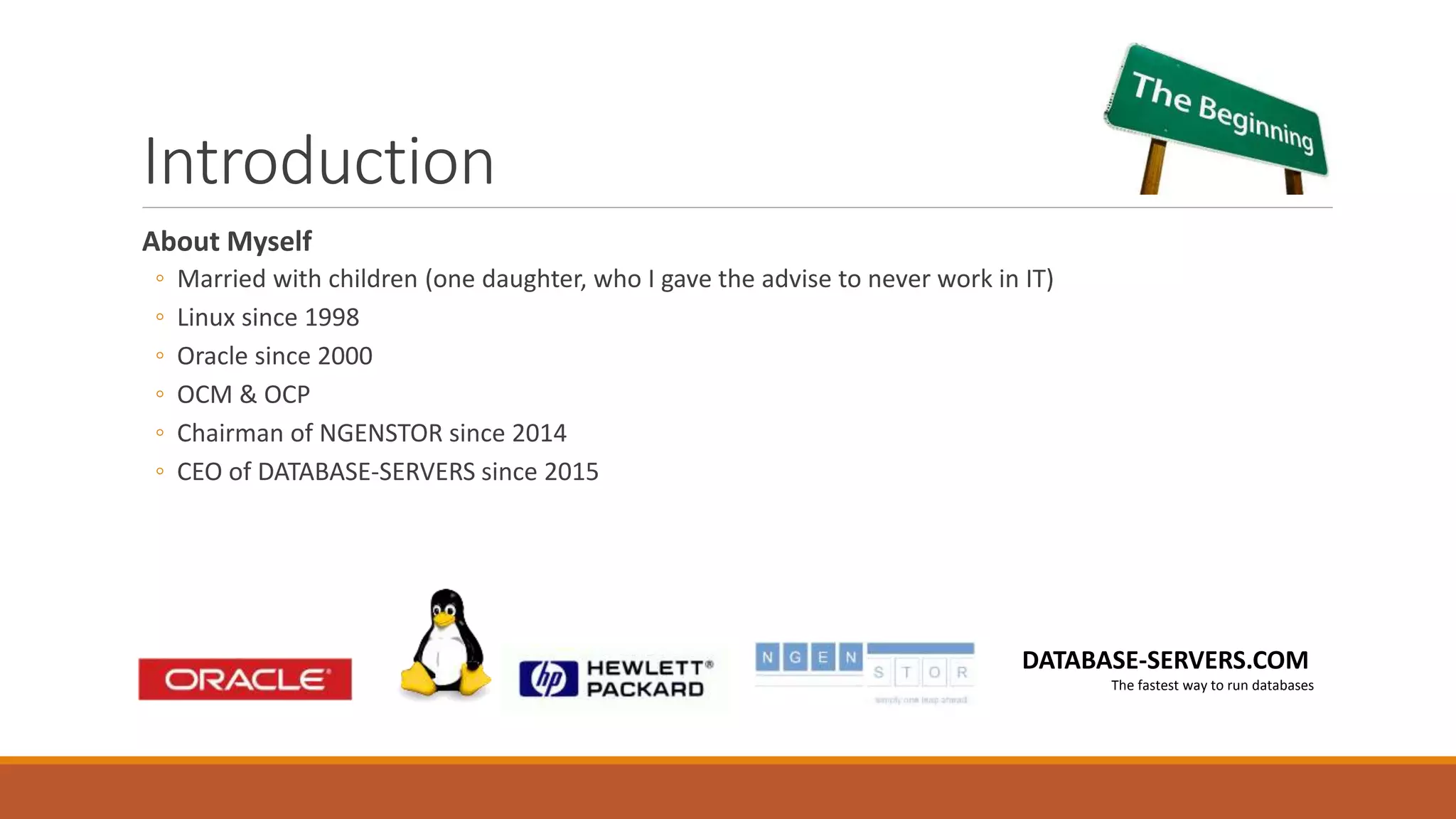

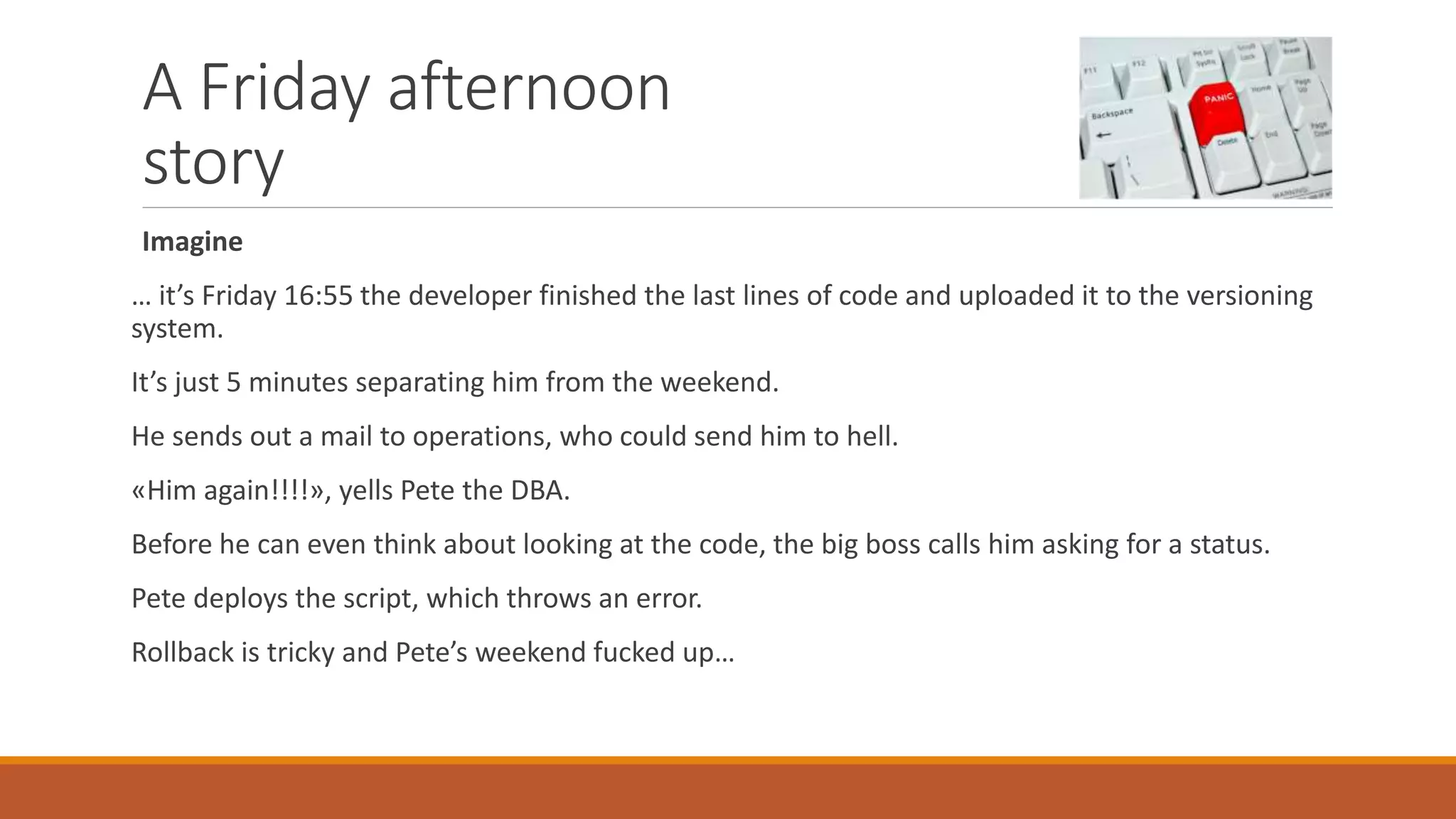
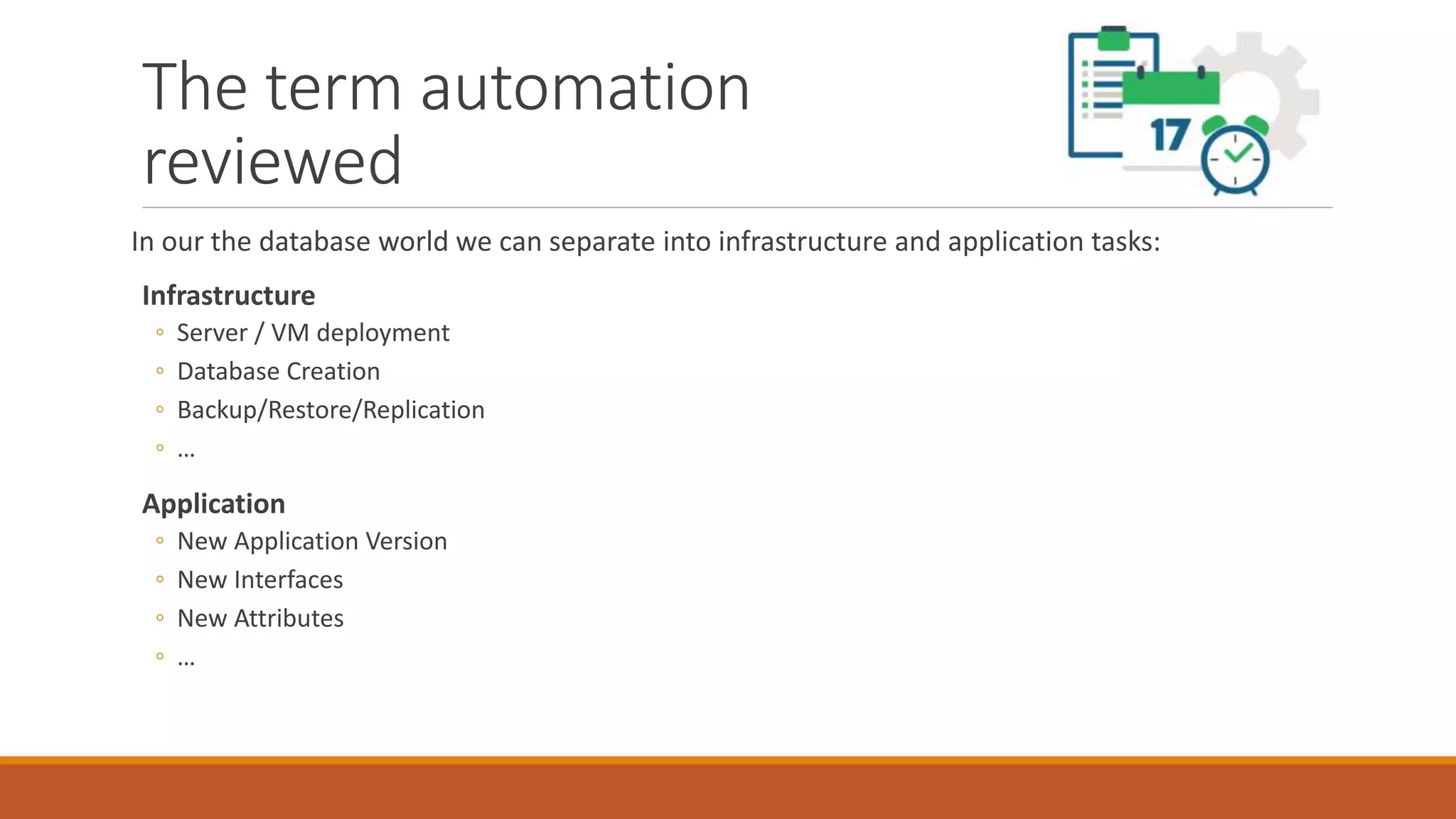
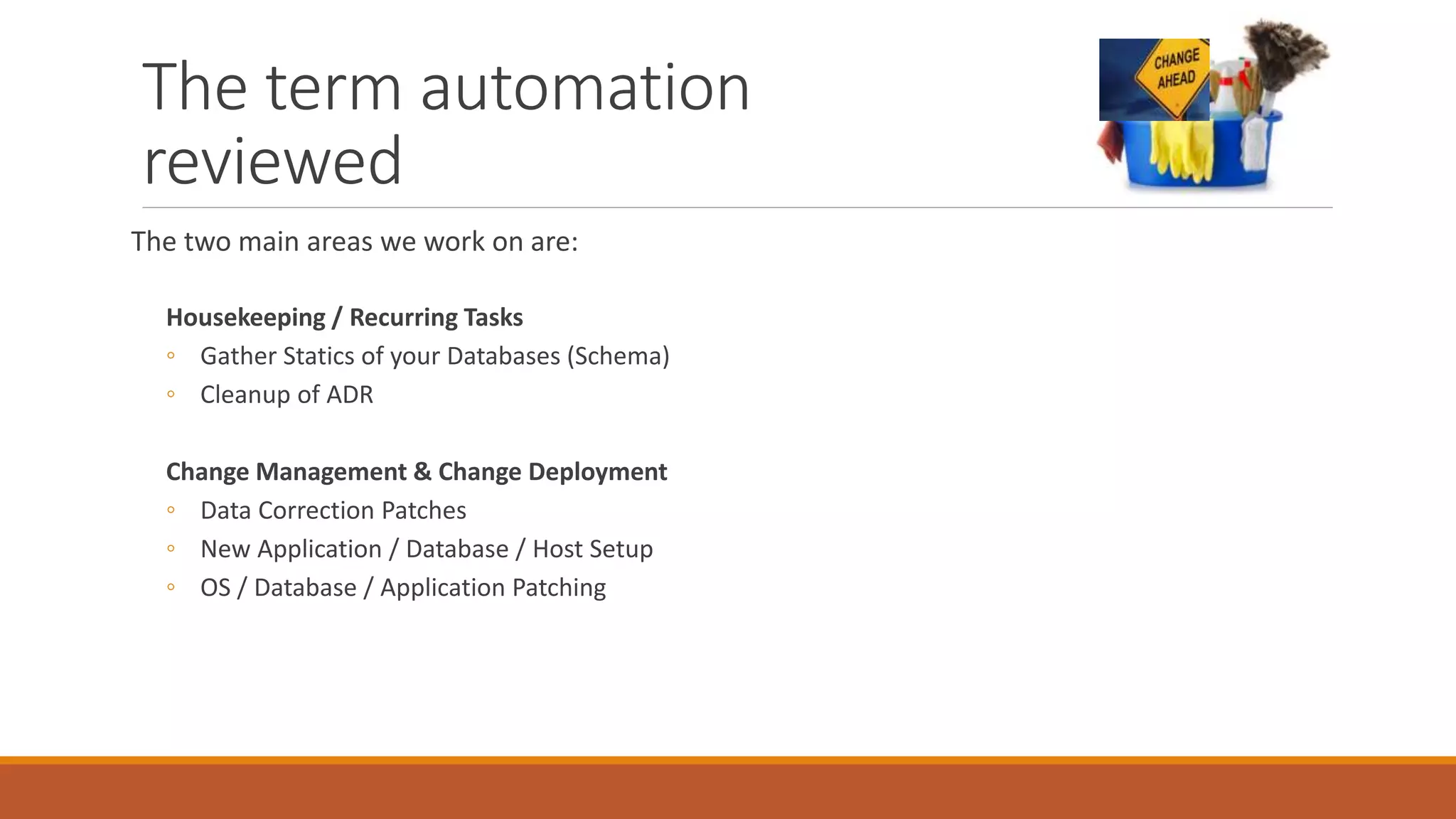
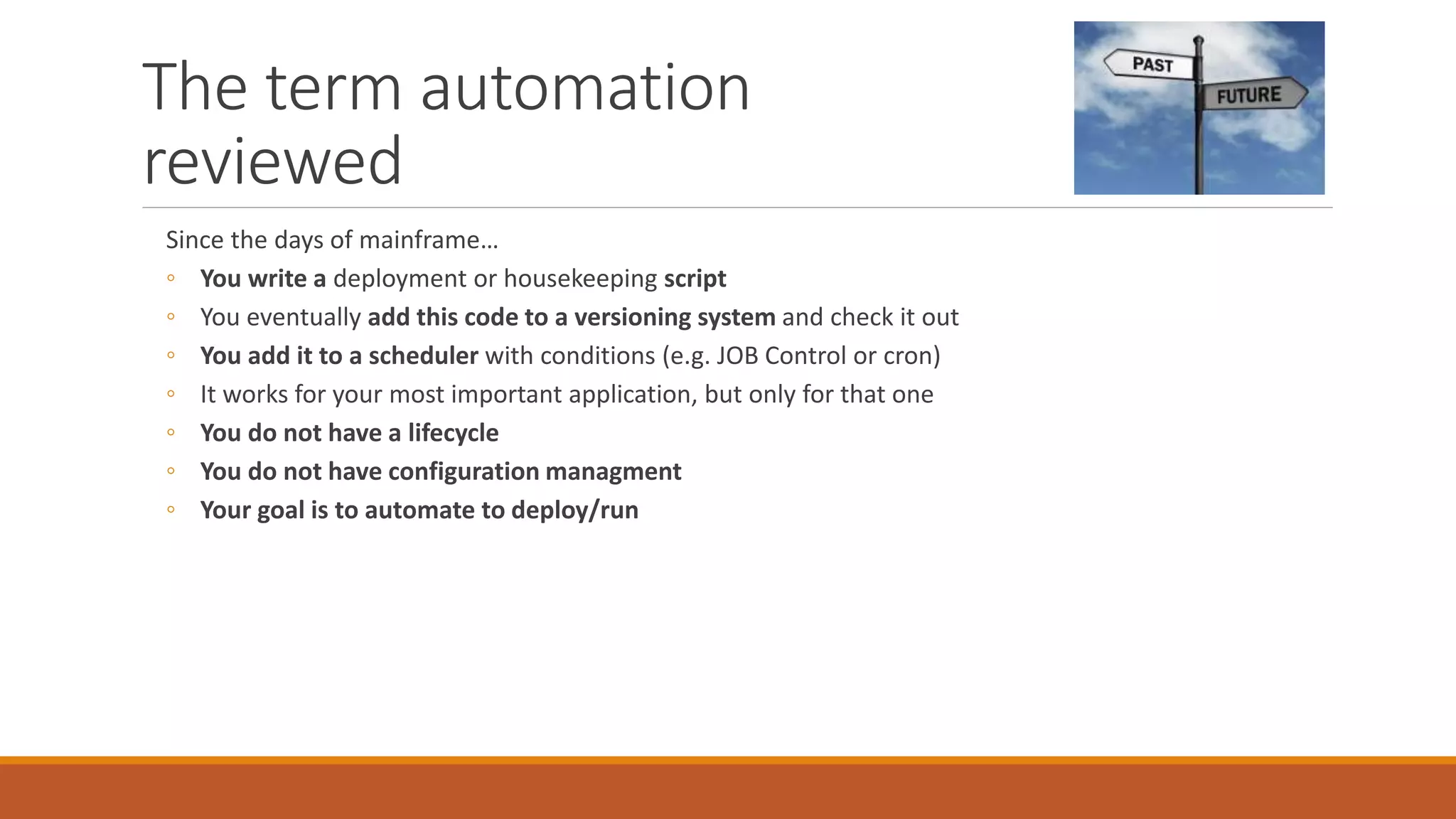
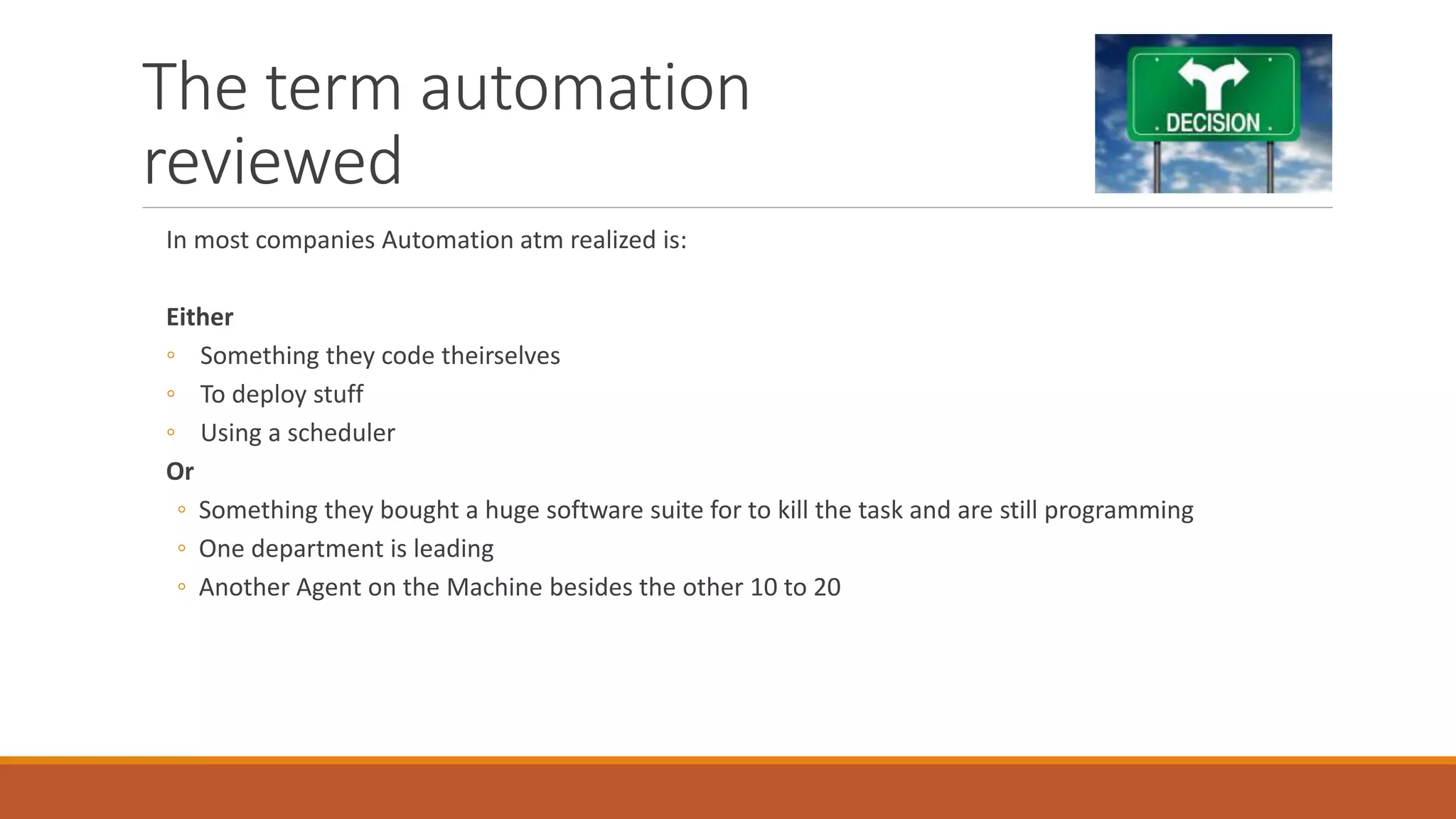
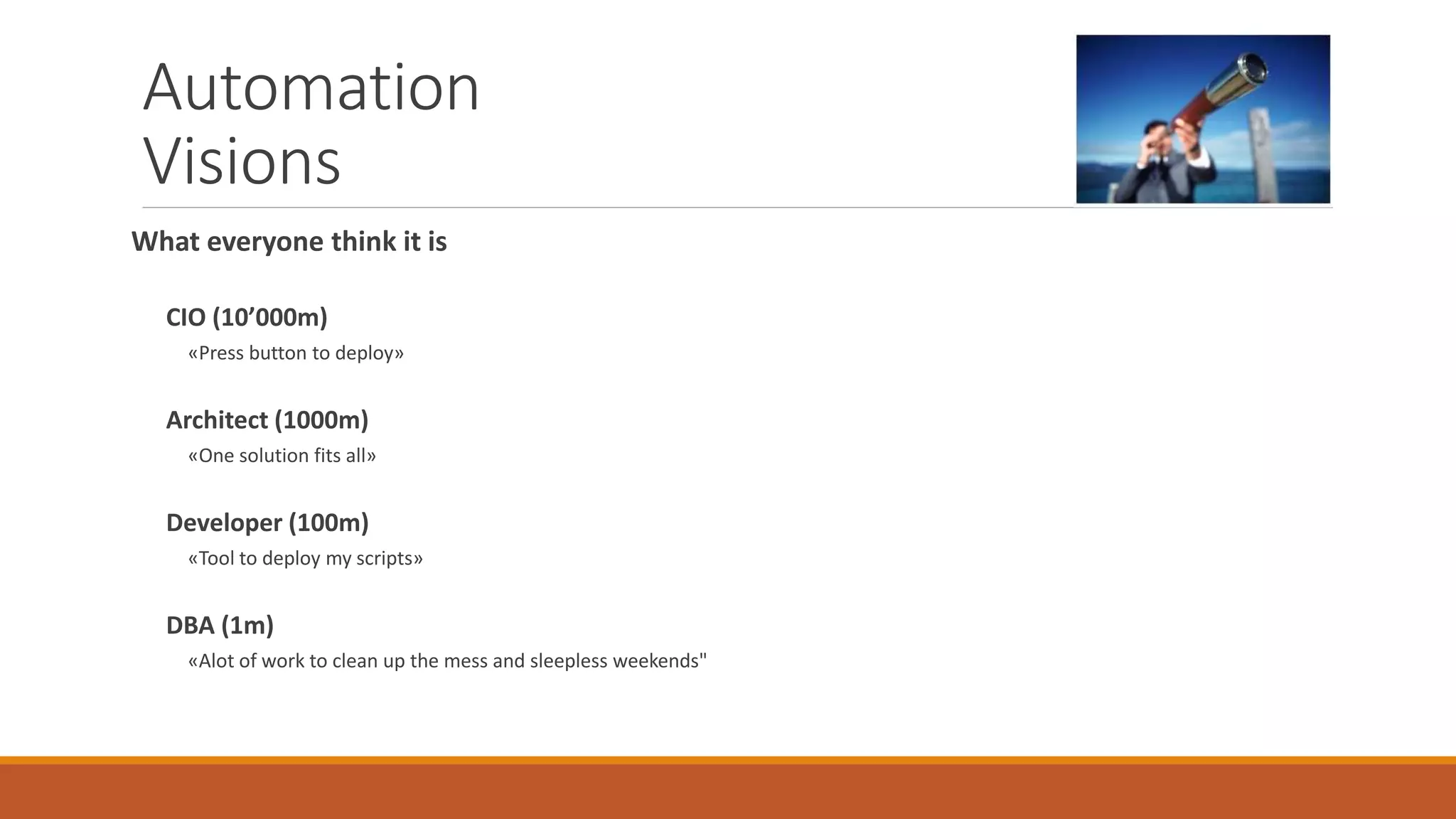
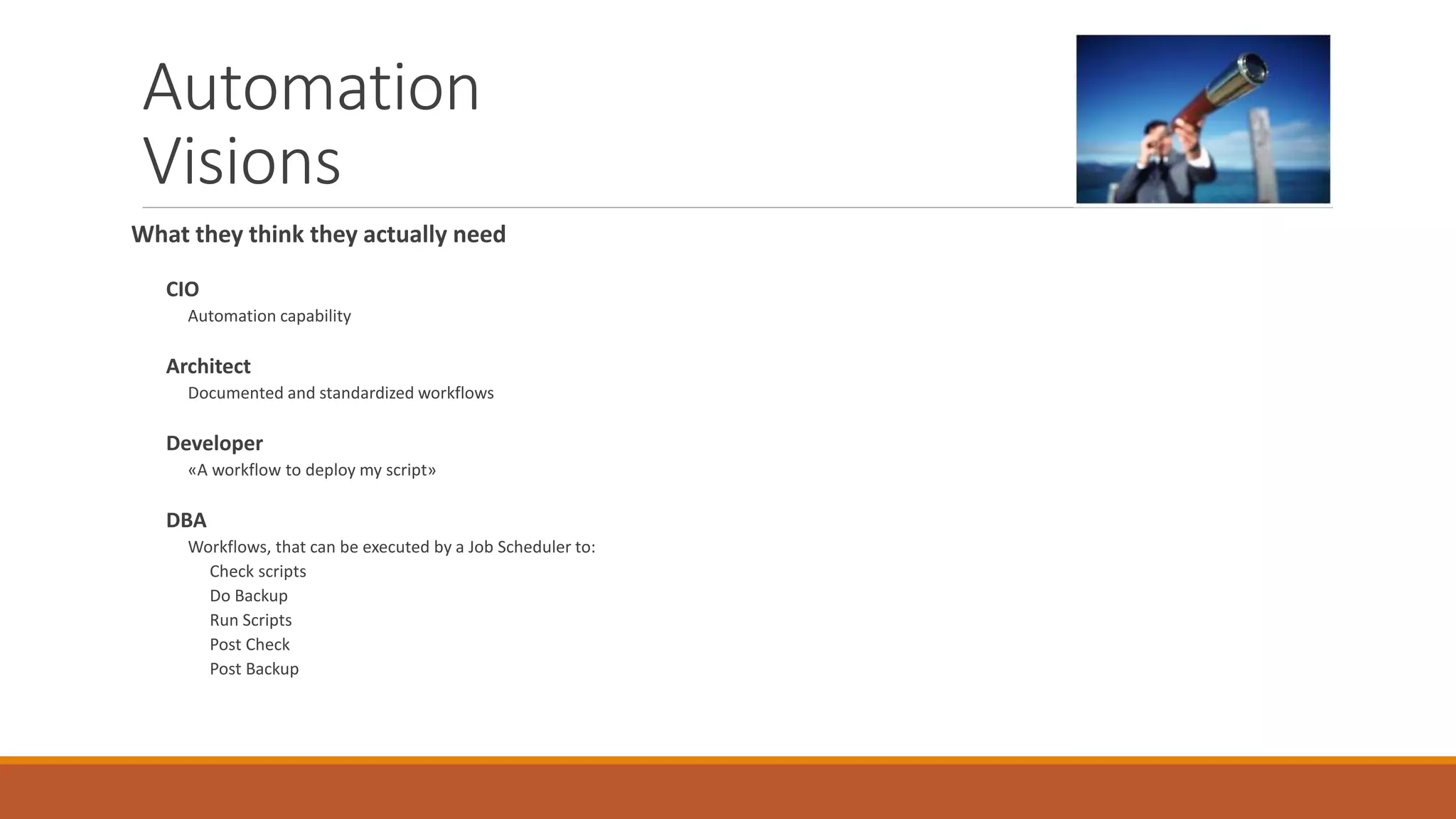
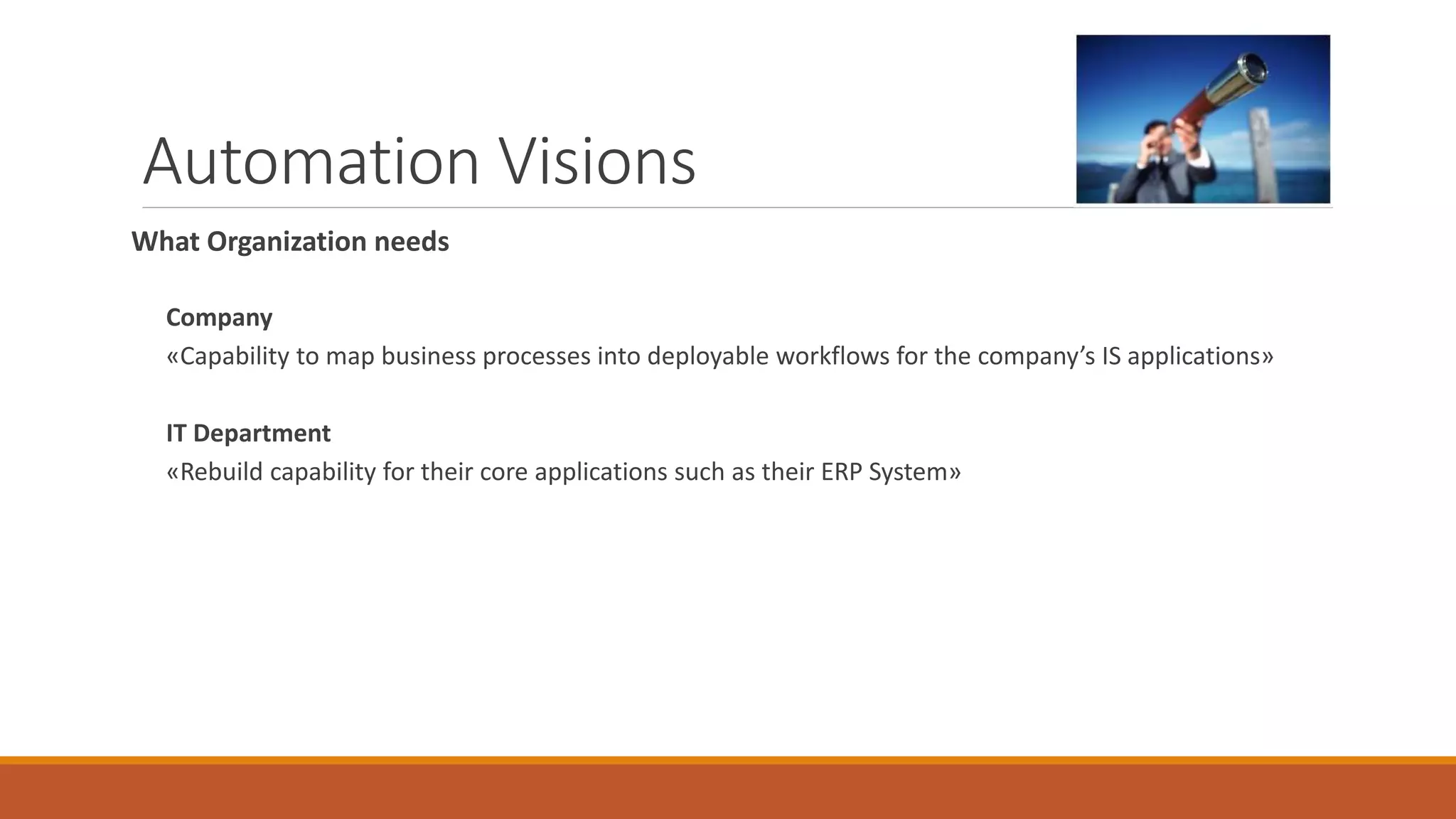
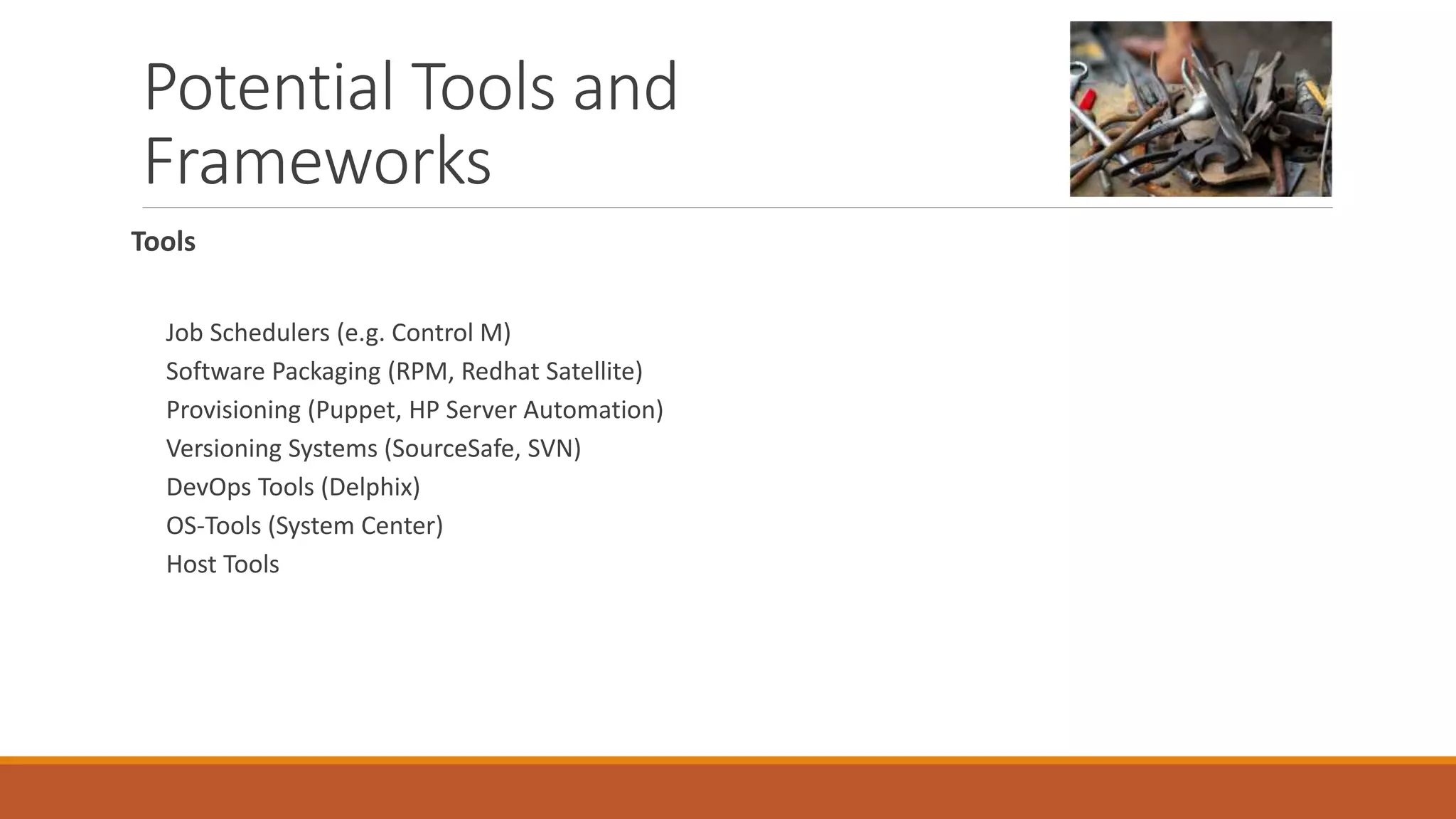
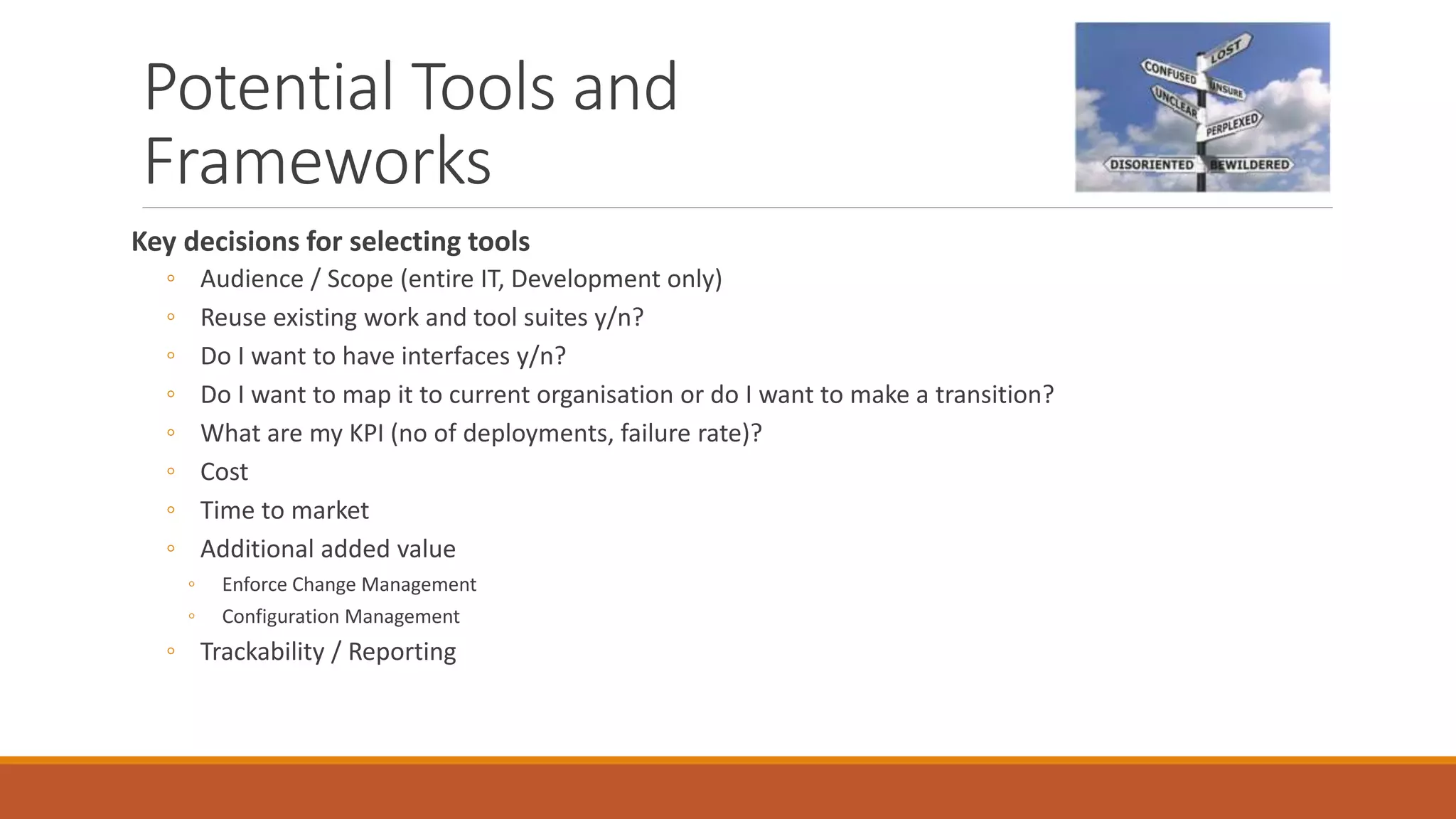
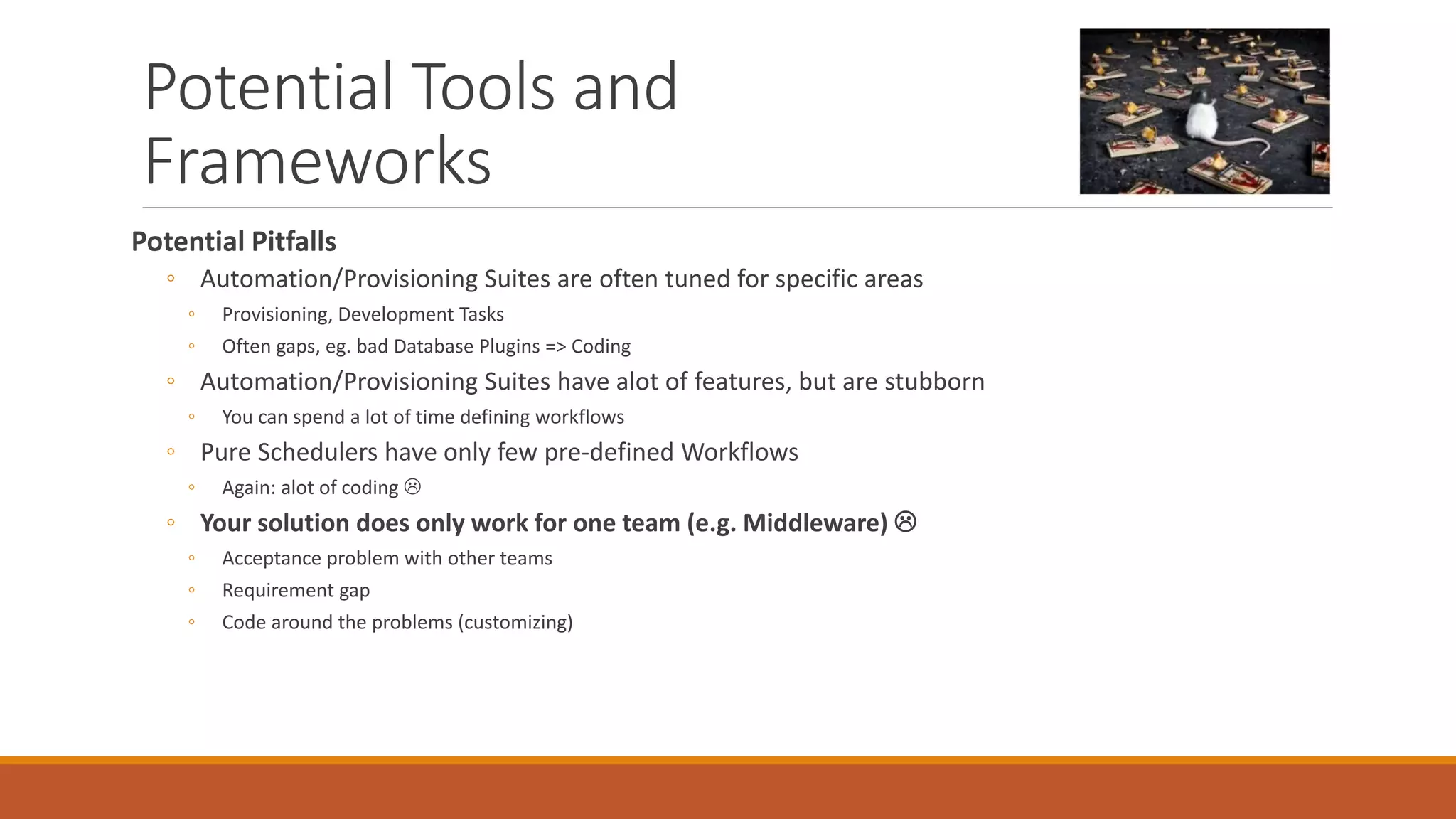
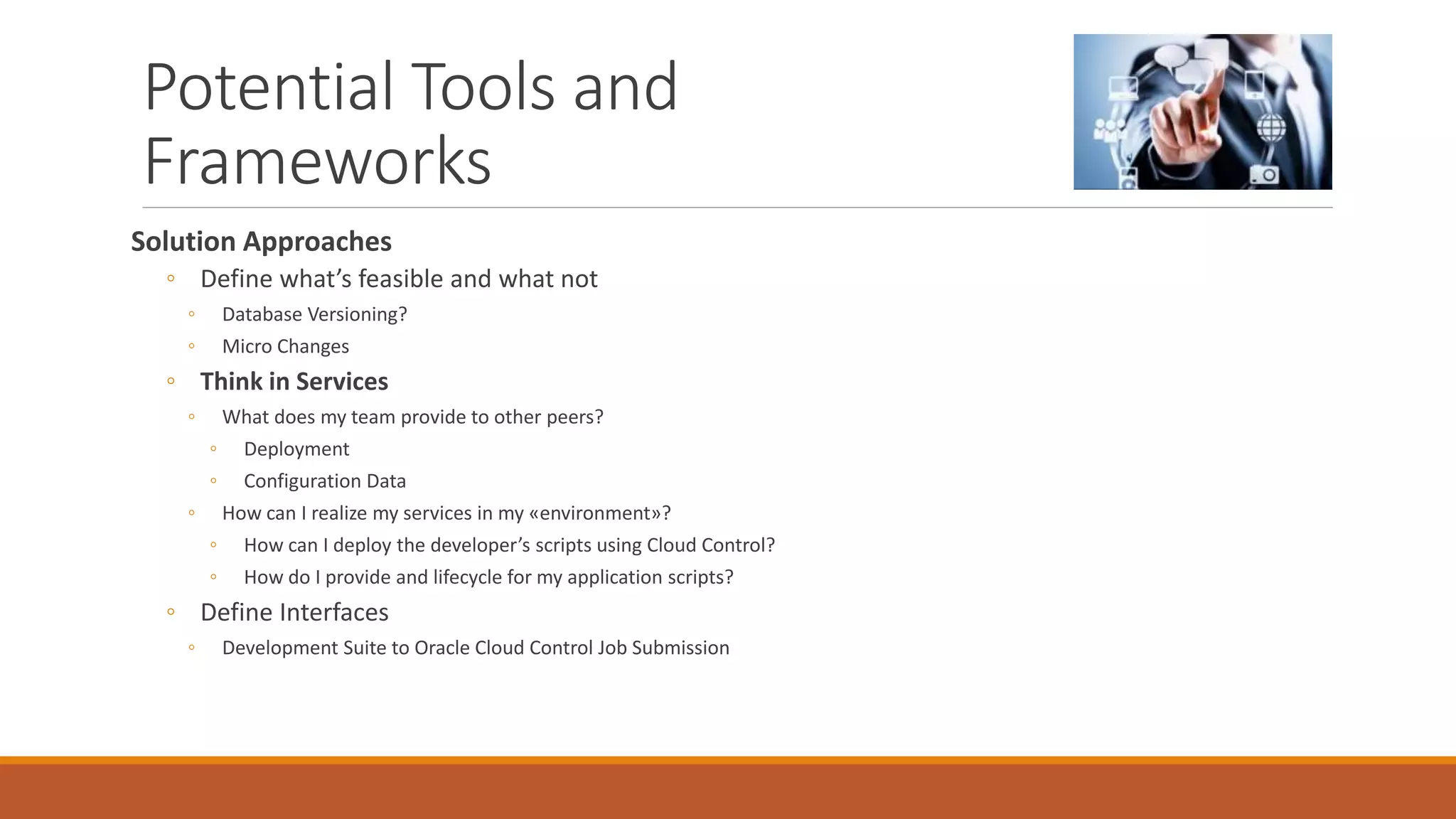
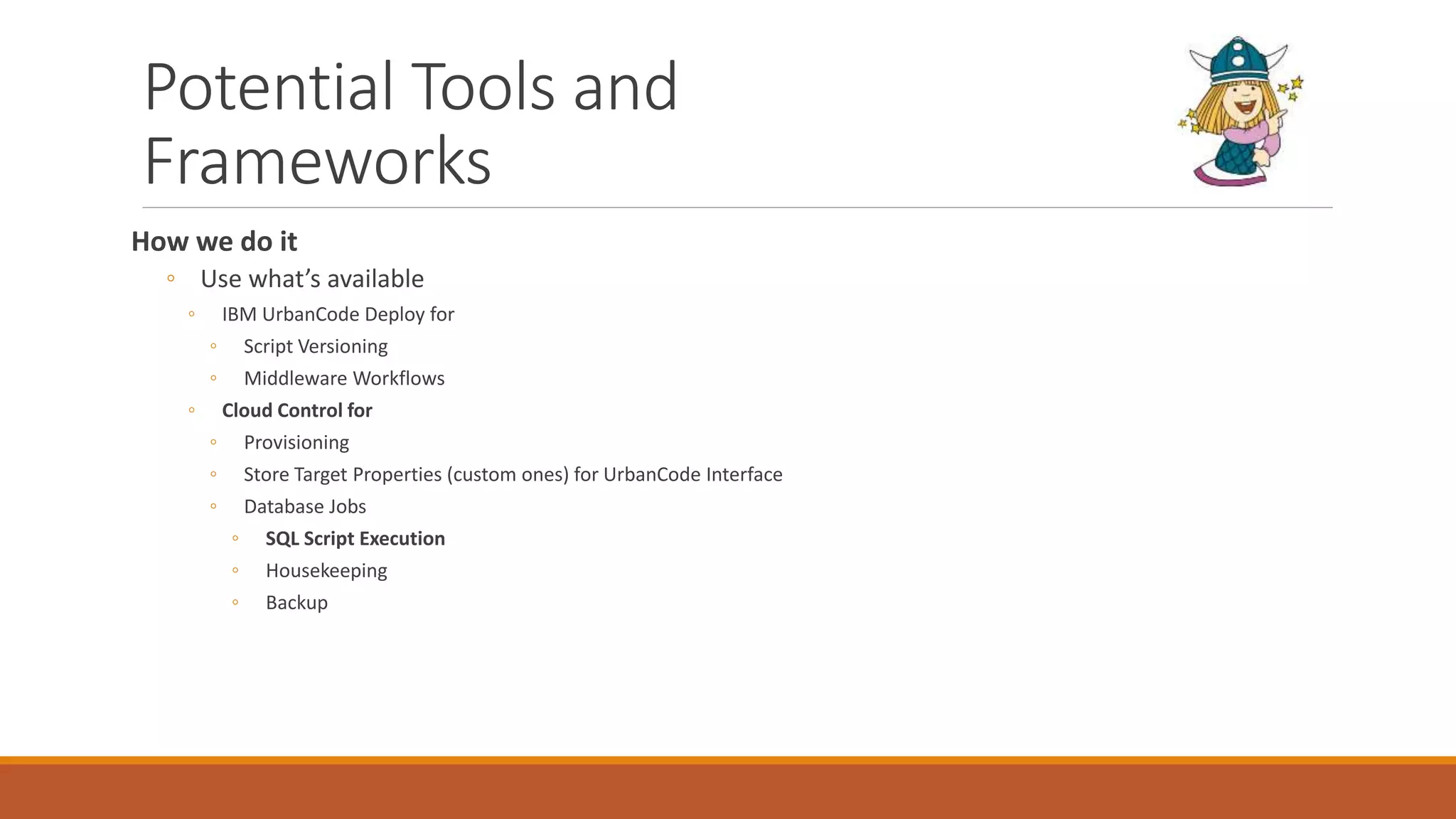
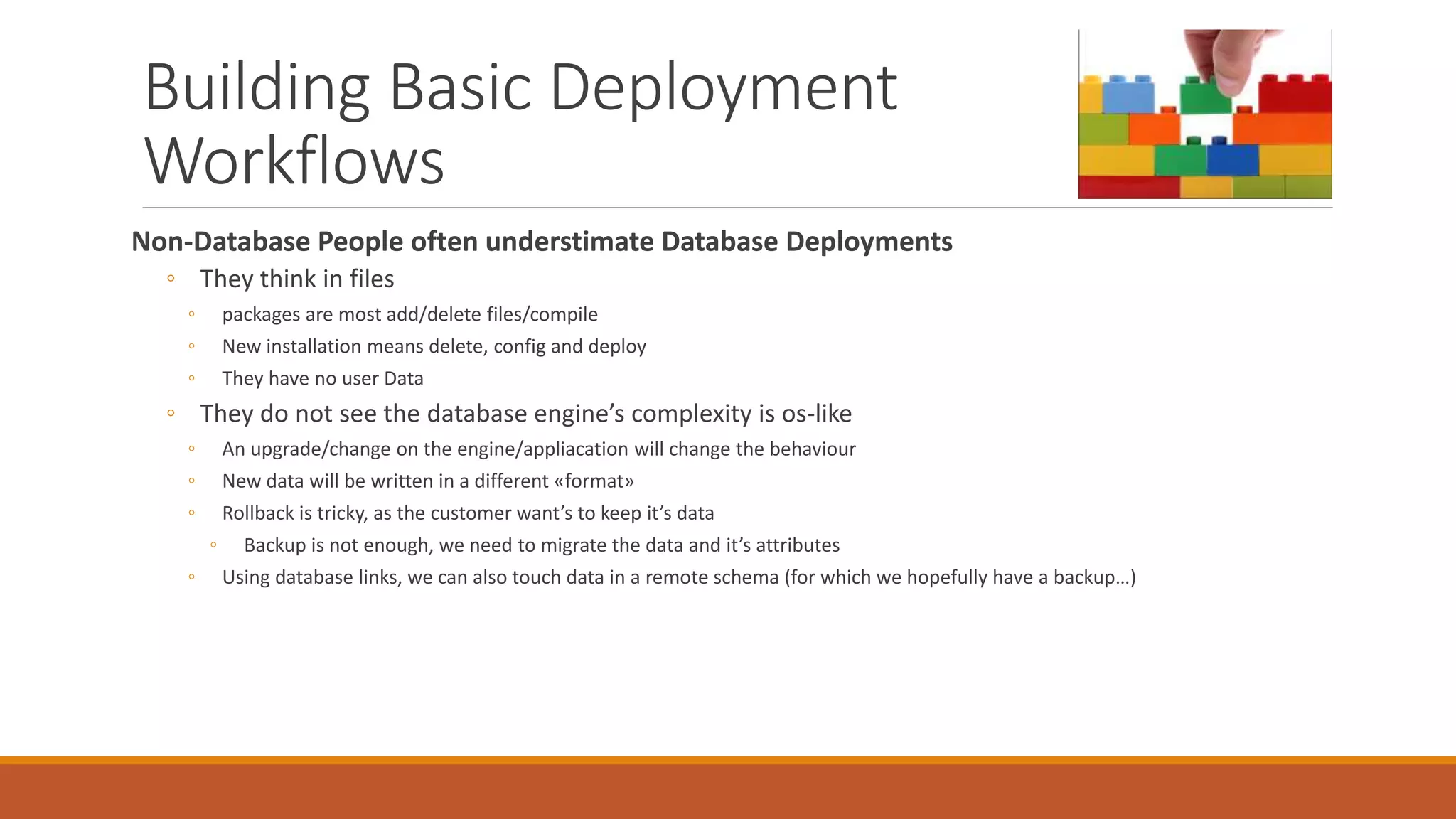

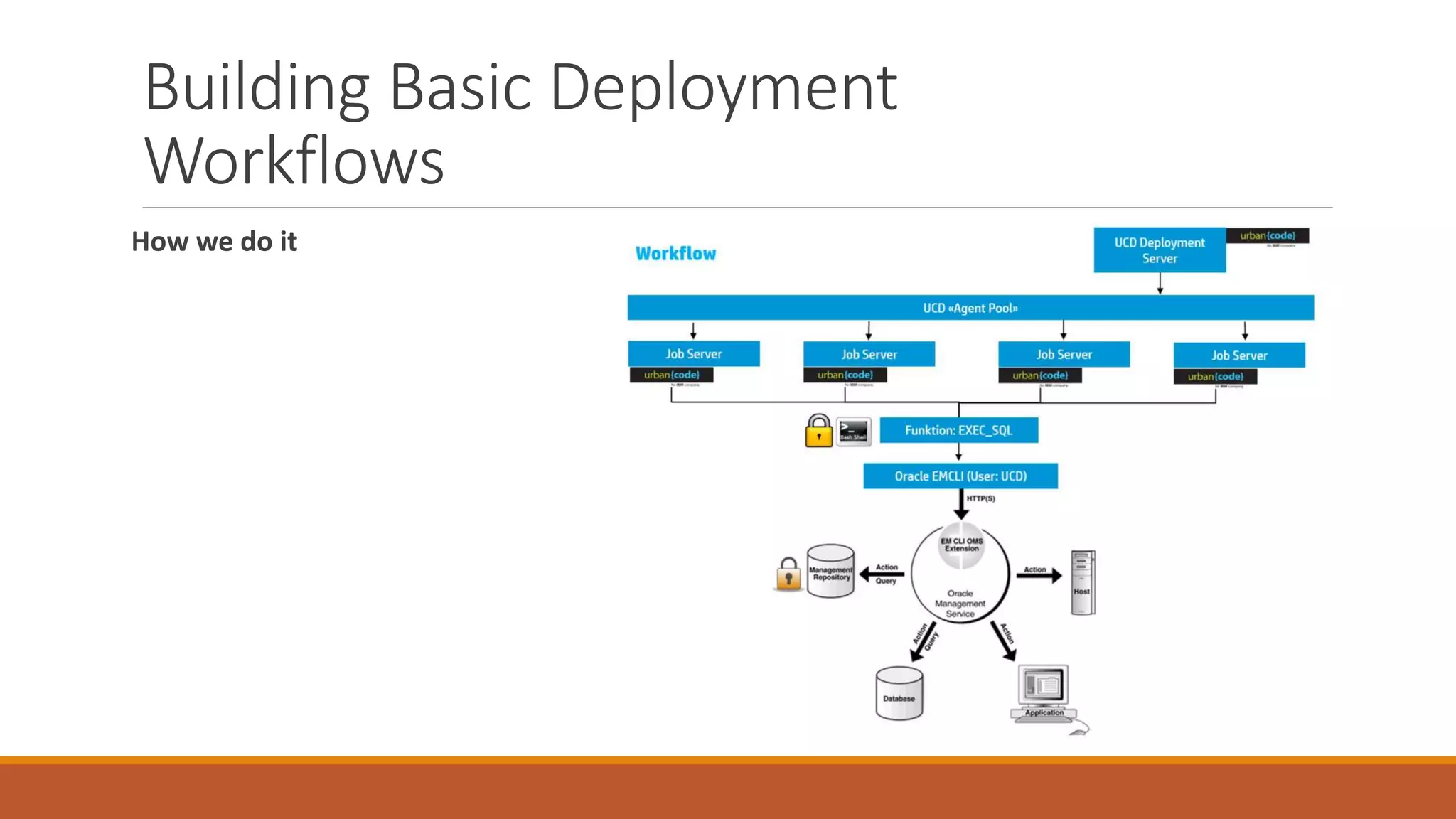

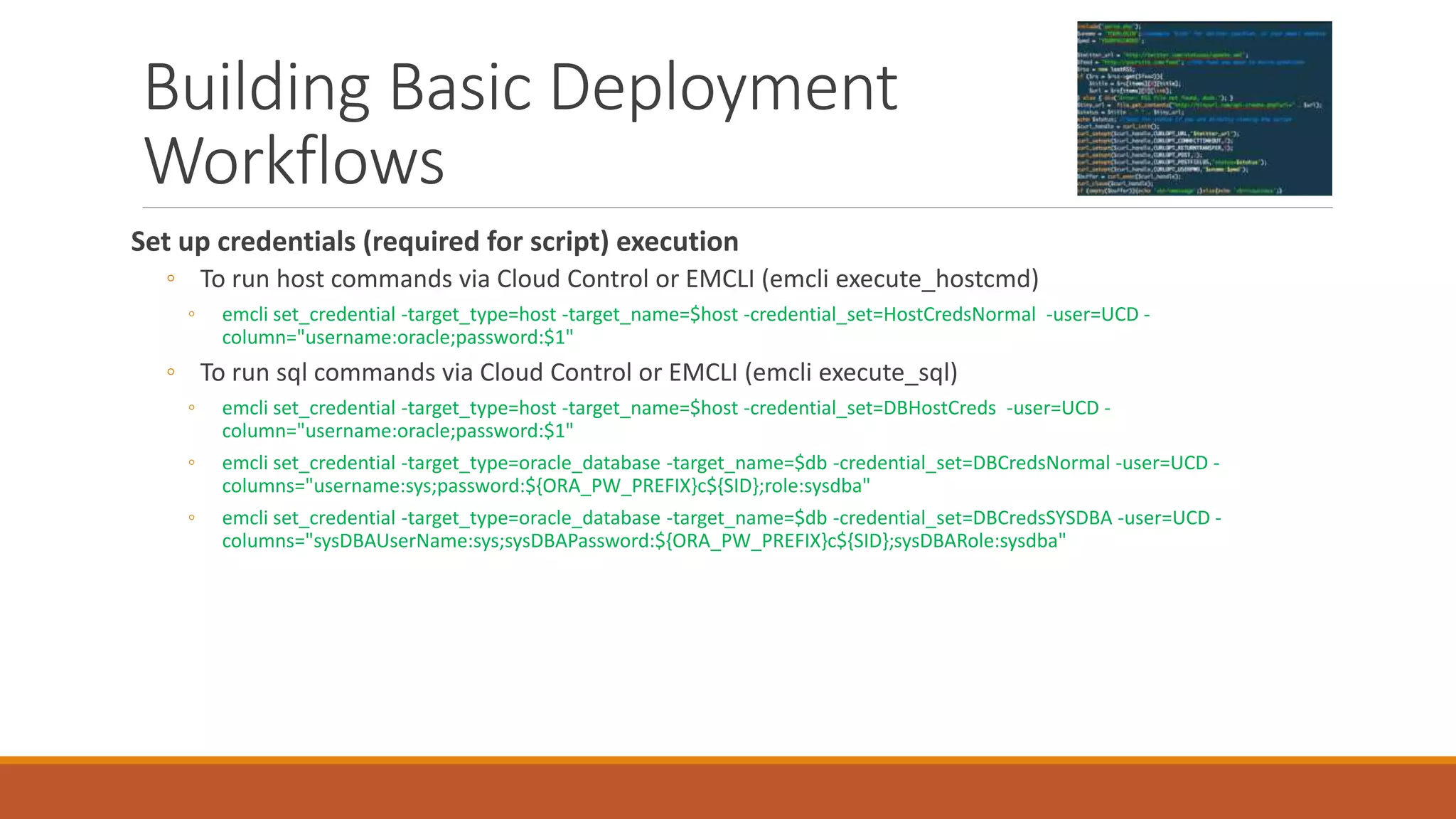
![Building Basic Deployment
Workflows
Create Proxy User
◦ Proxy Users and Auditing Proxy Users (Doc ID 782078.1)
CREATE USER UCD IDENTIFIED BY *********;
GRANT CREATE SESSION TO UCD;
ALTER USER DBSNMP GRANT CONNECT through UCD;
AUDIT SESSION;
AUDIT SELECT TABLE, UPDATE TABLE, INSERT TABLE, DELETE TABLE BY UCD ON BEHALF OF DBSNMP;
AUDIT SELECT TABLE, UPDATE TABLE, INSERT TABLE, DELETE TABLE BY DBSNMP BY ACCESS;
CONNECT UCD[DBSNMP]/*********;
CREATE TABLE test (id NUMBER);
INSERT INTO test VALUES(1);
commit;](https://image.slidesharecdn.com/40b49d1b-bbea-4ede-8448-fdf682ad2be2-150914100615-lva1-app6891/75/SOUG_Deployment__Automation_DB-23-2048.jpg)
